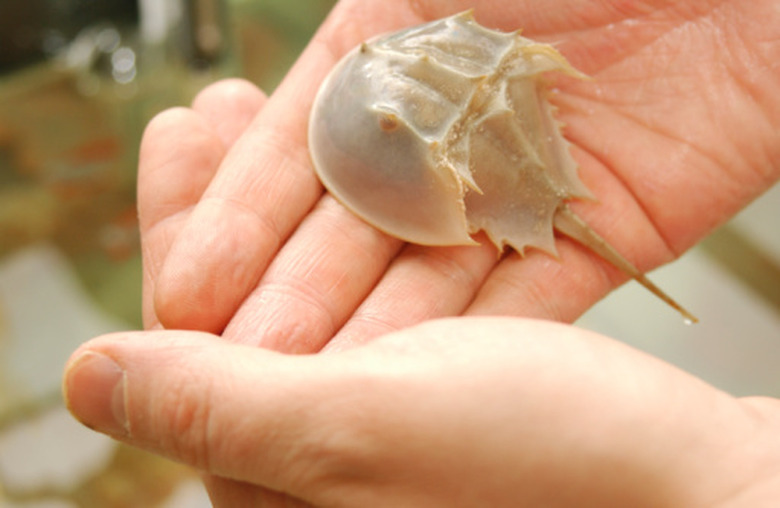Bugs That Excrete Blue Fluid
If you get a cut or a scrape, you'll undoubtedly notice that your blood has a bright red color. However, when you step on an insect, you might notice no blood comes out – unless you've squished a freshly-fed mosquito or other blood-sucking bug. This begs the question, what color is insect blood? Plenty of blue bugs exist, but do some bugs have blue blood?
Do Bugs Bleed?
Do Bugs Bleed?
Bugs do bleed, but not the standard red color you might be familiar with. Insect blood color usually looks more green or yellow. This is because insect blood doesn't contain red blood cells – the cells that give our mammalian blood its color. Instead, their body cavity lacks blood vessels and is filled with a blood-like fluid known as hemolymph. Their heart pushes this hemolymph around the body cavity.
However, you might have noticed if you've squished a spider that blue blood comes out. This is because spiders aren't true insects.
What Bugs Excrete Blue Fluid?
What Bugs Excrete Blue Fluid?
As a whole, most true insects do not have blue blood, but creatures in the taxonomic class Arachnida do! They aren't alone either – many crustaceans, squid, octopi and mollusks also have blue blood. These creatures contain blue blood because their blood has a unique protein known as hemocyanin. While within the body, the blood doesn't have any color at all. However, the copper within this protein reacts when it comes in contact with oxygen, giving the blood a blue color outside of the body.
Though true insects do not have blue blood, some examples of rather insect-like bugs that excrete blue fluid include pillbugs, spiders, scorpions and more.
Arachnids Have Blue Blood
Arachnids Have Blue Blood
Researchers have identified over 50,000 different species of spiders, all of which possess blue blood. From the large hairy tarantula of the arid southwest United States to your basic garden spider hanging from its web in the United Kingdom, all possess similar anatomical structure and blue blood that contains hemocyanin to transport oxygen. Scientists classify all spiders in the taxonomic class Arachnida.
But spiders aren't the only members of the Arachnida class, and the other arachnids also contain blue blood within their bodies. Some other arachnids include scorpions, mites, ticks, harvestmen and whip scorpions. Though ticks are members of Arachnida, you likely won't find blue blood when you squish them, as ticks engorge themselves with vertebrate blood when they feed.
Pillbugs Have Blue Blood
Pillbugs Have Blue Blood
Whether you refer to them as pillbugs, rolly-pollies, woodlice or some other nickname, these little armored creatures also sport blue blood. But pillbugs are not arachnids, and they certainly don't look like crabs or octopi! You might be surprised to find that despite their insect-like appearance, pillbugs aren't really bugs at all. Instead, scientists classify these invertebrates as crustaceans.
While you might not imagine a pillbug could possibly be a crustacean, another blue-blooded creature might surprise you even more with its lineage.
Horseshoe Crabs Aren't Crabs at All
Horseshoe Crabs Aren't Crabs at All
Despite their name, their appearance and their aquatic tendencies, research has shown that horseshoe crabs actually share closer ancestry to spiders and scorpions. Like the rest of the arachnids, these creatures feature blue blood. However, horseshoe crab blood contains another unique chemical that the rest of Arachnida doesn't: coagulin.
Coagulin sounds like some type of silly putty, but it actually has really important medicinal properties. Scientists utilize this unique chemical to test for bacterial contamination in medications and other pharmaceutical compounds. They can use very small quantities of this blood to create these tests. Best of all, the horseshoe crab doesn't lose its life in the process. The researchers collect a specified amount of blood from the horseshoe crabs, then release them back into the water.
References
- Vox: Why Some Animals Have Blue, Green or Purple Blood
- National Institute of Environmental Health Services: Would You Keep These Pills in Your Medicine Cabinet? – Pillbugs
- McGill: Snails, Spiders and Octopi All Have Blue Blood
- The Conversation: Do Ants Have Blood?
- Animal Diversity Web: Arachnida
- National Geographic: Bizarre Horseshoe Crabs are Actually Spider Relatives
Cite This Article
MLA
Zinni, Yasmin. "Bugs That Excrete Blue Fluid" sciencing.com, https://www.sciencing.com/bugs-that-excrete-blue-fluid-12566195/. 30 September 2021.
APA
Zinni, Yasmin. (2021, September 30). Bugs That Excrete Blue Fluid. sciencing.com. Retrieved from https://www.sciencing.com/bugs-that-excrete-blue-fluid-12566195/
Chicago
Zinni, Yasmin. Bugs That Excrete Blue Fluid last modified March 24, 2022. https://www.sciencing.com/bugs-that-excrete-blue-fluid-12566195/
